6 kinds of extremely beautiful potted flowers, with short plants and exquisite flowers, but not many people can grow them well
In addition to the common flowers in our lives such as roses, peonies, camellias and azaleas, there are also many potted flowers with short plants and strong ornamental value. Their flowers are very beautiful and charming, and the flowers look elegant and graceful, but the difficulty of maintaining beautiful plants is usually not too easy.
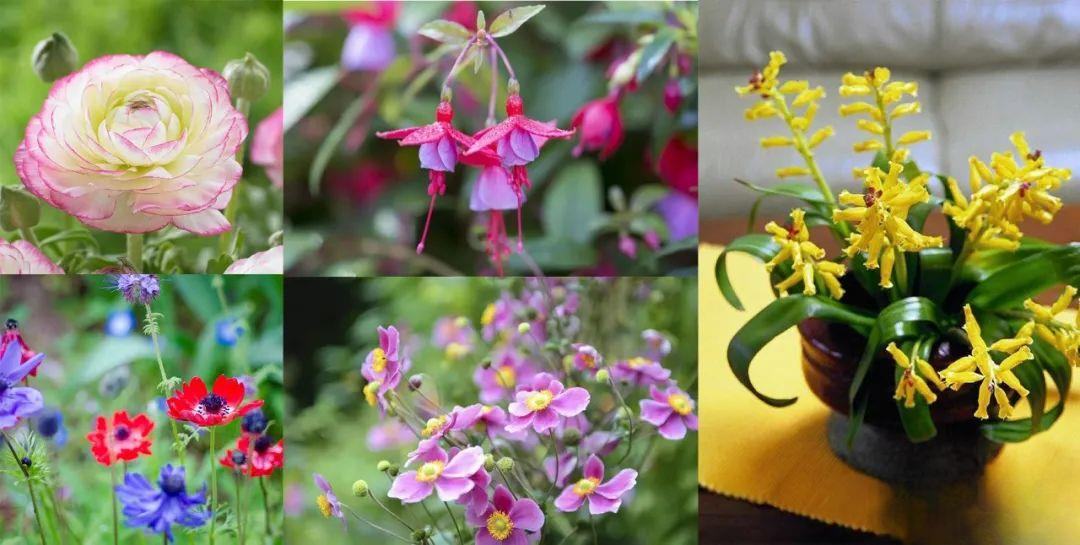
Now, let's get ready and enjoy these potted flowers together. If the environmental conditions are suitable, you can also try to grow a few.
1. Anemone
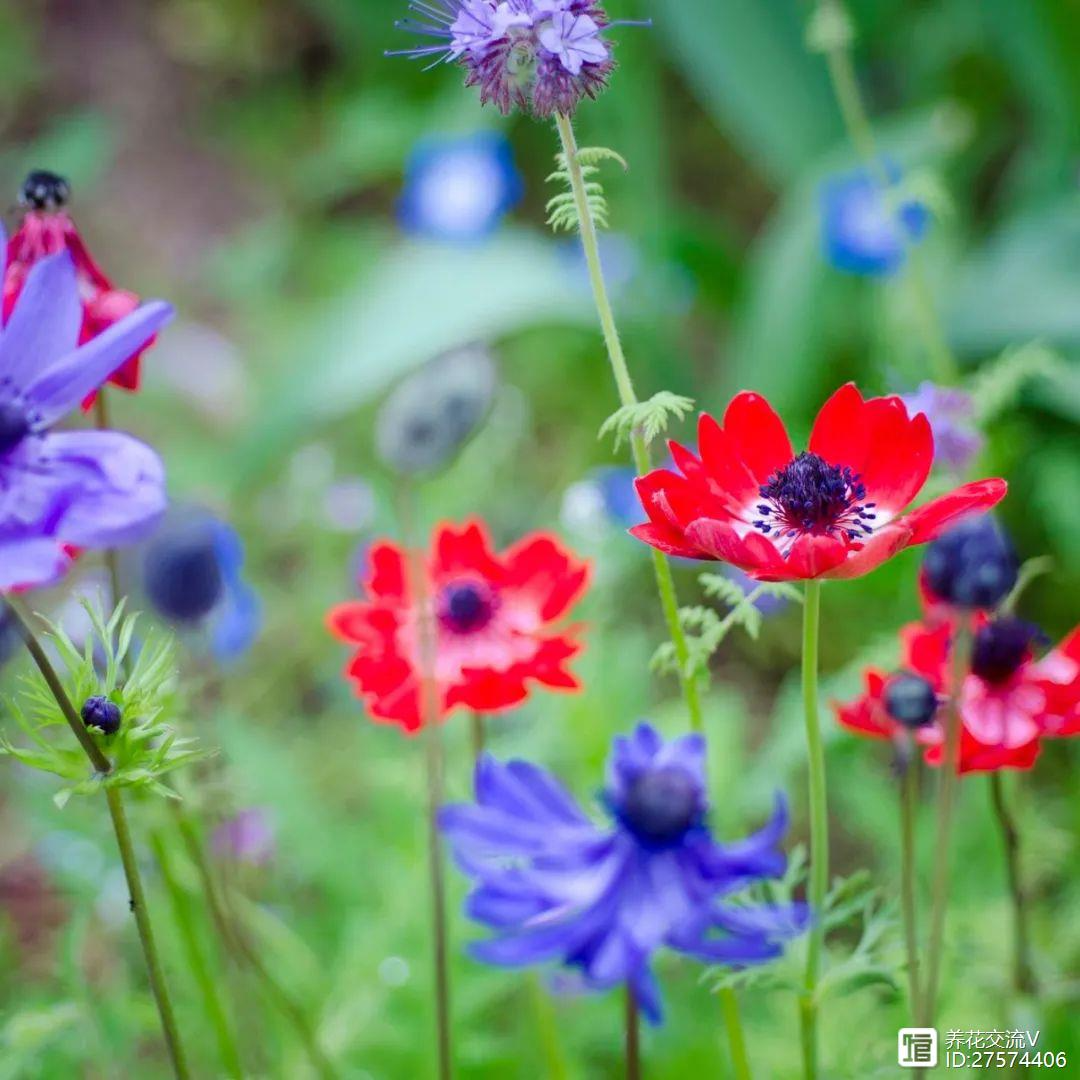
The shape of Anemone looks particularly elegant, and the color of the flower is quite charming, including the common white, pink, lavender, etc. The whole shape gives people a very fresh and elegant feeling.
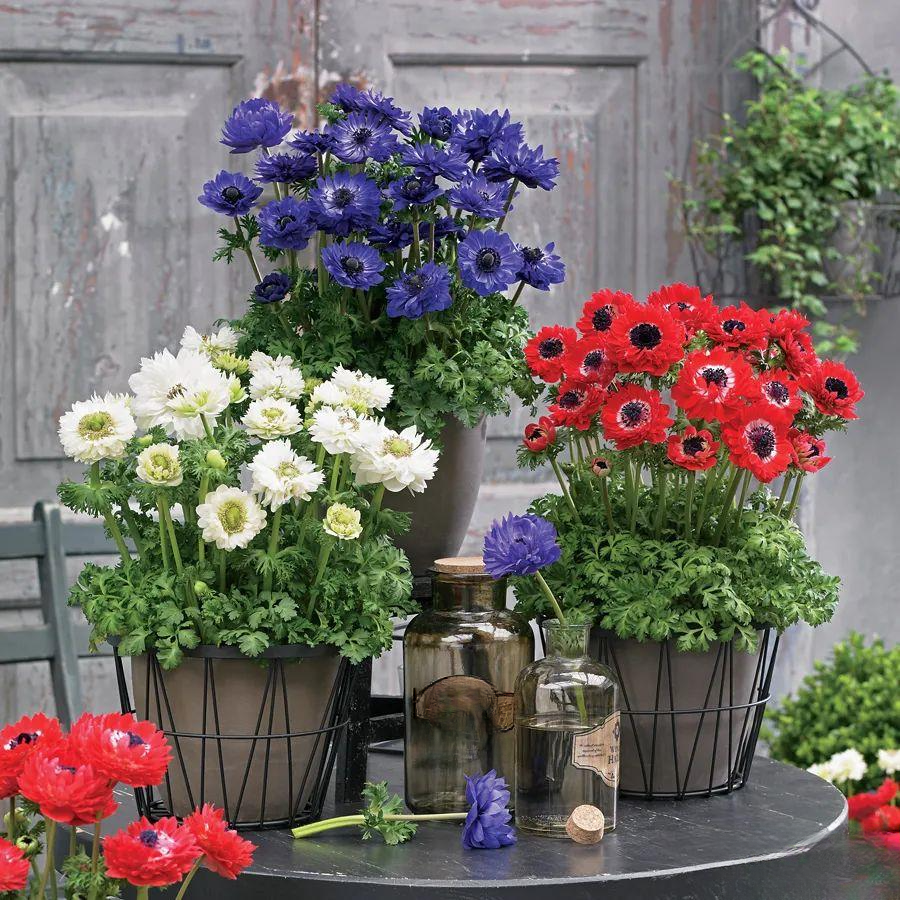
Above is a potted anemone
However, many people cannot grow silver anemones well. Its plant height is generally only 50 to 60 cm, and its flower stems are particularly fragile. They must be grown in a windproof environment. Silver anemones have a long flowering period, generally blooming in spring, summer and autumn.
Anemone is suitable for planting in temperate regions. It is afraid of heat. It is definitely difficult to grow this plant well in Guangdong, Guangxi and Fujian. It needs a cool environment with more scattered light, avoiding excessive heat and exposure to the sun. More than 4 to 6 hours of soft light a day is very friendly to its growth.

To cultivate anemone, you need to provide it with some fertile, loose and humus-rich organic soil. The soil must also have good drainage. Moreover, anemone cannot be transplanted after planting, so it must be fixed in a position. It can be grown in a flowerpot or planted directly in the ground. Generally, it is planted directly with tubers.
2. Fuchsia

Fuchsia is an ornamental plant that many flower lovers repeatedly fall in love with. It is also called "hanging bell crabapple". The flowers look particularly delicate and charming, like a small bell. It also has various double-petal varieties with extremely rich colors, which looks particularly attractive. It can produce flowers in spring, summer, autumn and winter, but it has a fatal flaw, that is, it is extremely afraid of heat.
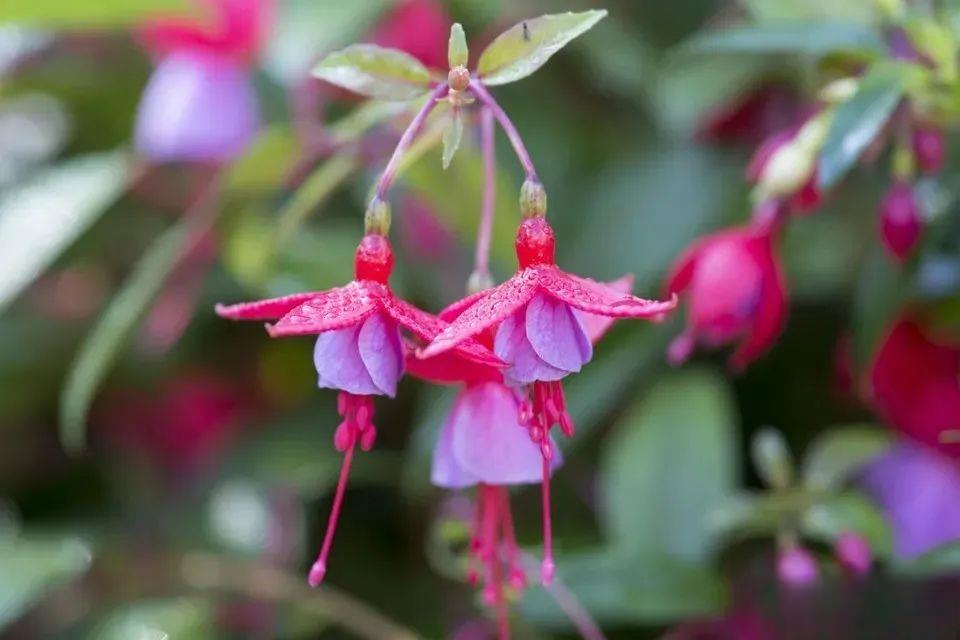
Fuchsia is also afraid of cold, and the maintenance temperature needs to be maintained above 7-10 degrees so that it can safely survive the winter. If the summer temperature exceeds 25 degrees, it will basically slow down its growth. If the temperature is above 30 degrees, it will grow poorly. When it is hot in summer, it must be kept under the shade of a tree or in other cool places. If it can survive the summer safely and do a good job of sheltering from rain to prevent root rot, it is actually quite easy to keep in some cool and warm places.
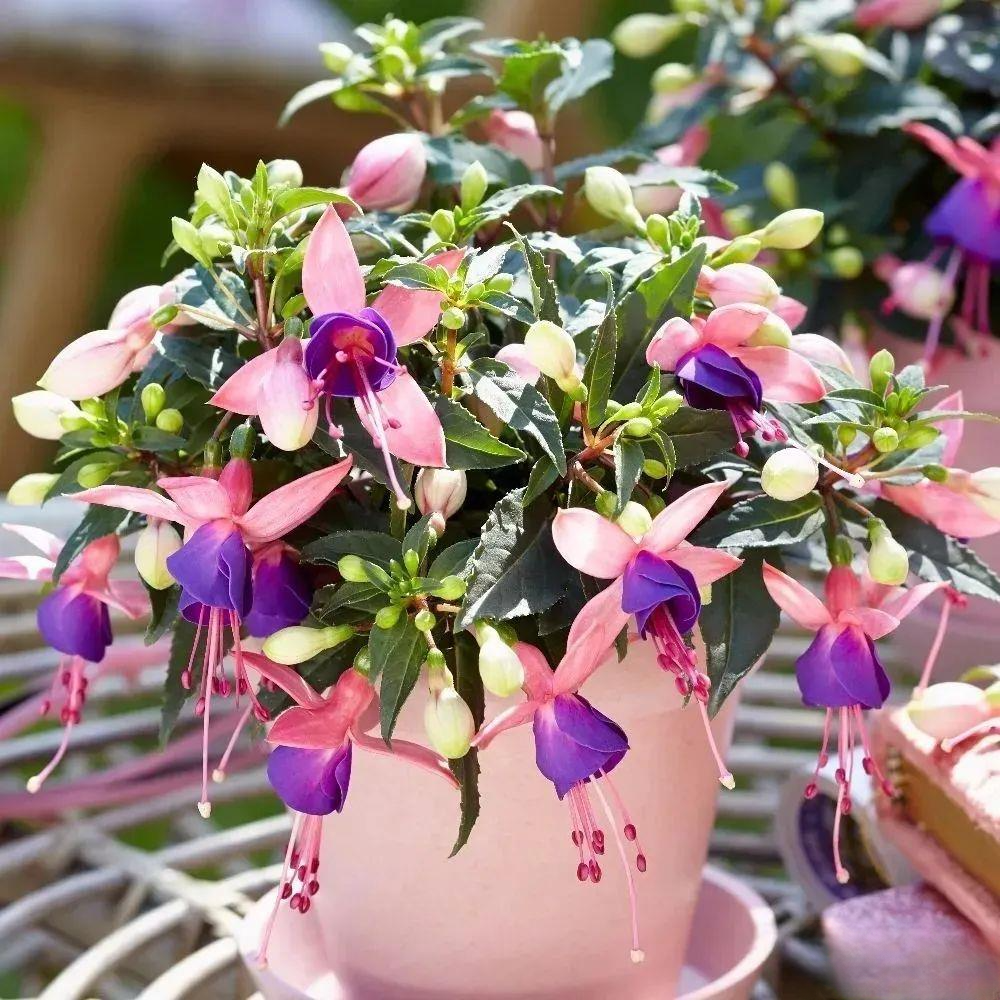
Fuchsia can be propagated continuously by branch cuttings. If you grow this plant, you must make backups in advance and propagate more seedlings by cuttings.
Fuchsia likes more light but is afraid of overexposure to the sun; it likes water but is afraid of waterlogging in the soil; it likes ventilated environment but is afraid of strong wind; it likes fertilizer but is afraid of too much fertilizer, especially during the flowering period. Its flowers grow continuously and there are a lot of flowers. If there is not enough nutrient support, its flowers and stems and leaves will easily wilt.
3. Cowslip
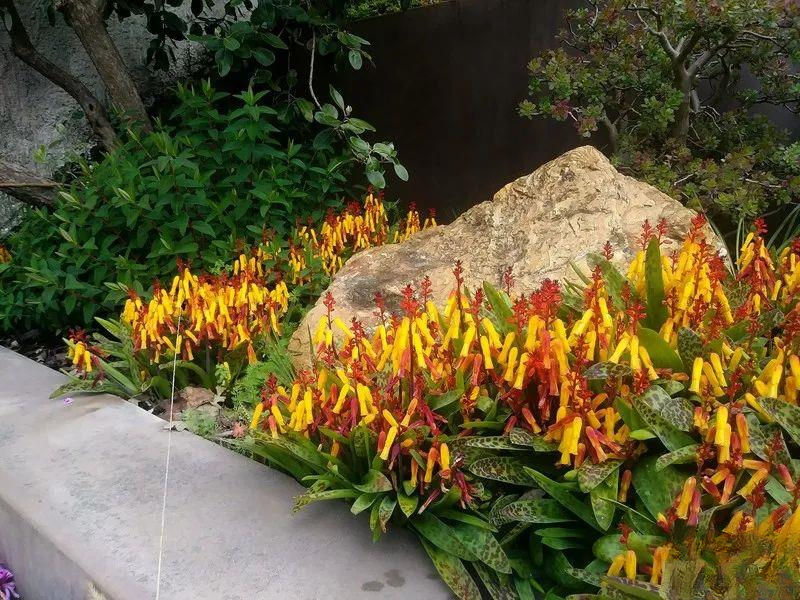
Lachenalia aloides, also known as "firecracker lily", is a small bulbous flower. Its flowers bloom in clusters and look like small firecrackers. The most common colors are red, yellow and pink, all of which look very festive.
The leaves of the Ligusticum aviculare are relatively broad, with some black spots on the leaf surface, and flower stalks growing out from the center of the plant.
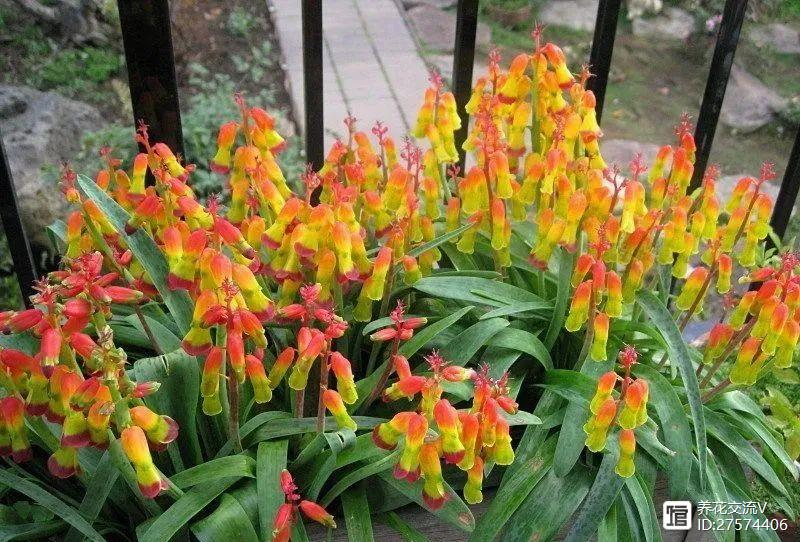
There are many varieties of Lichen, the most common ones include Turquoise Lichen, Ruby Lichen, Rose Lichen and Matthews Lichen.
If you want to plant Lichen, you can buy the bulbs directly and plant them. It is more suitable to be planted after the weather cools down in autumn. You can place the bulbs flat on the soil surface and cover them with a layer of 1 to 2 cm thick thin soil. Keep a warm and ventilated environment. Water it thoroughly once, and then wait for it to grow small buds and then slowly expose it to the light. In the later stage, keep the soil dry and water it thoroughly. When the soil is more than half dry, add water to it.
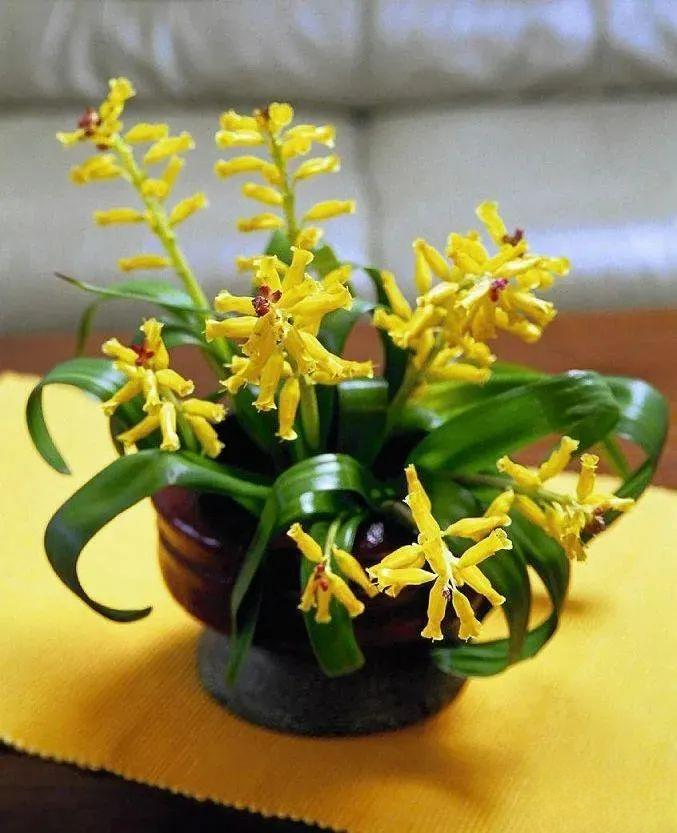
The cold resistance of Li Jinhua is relatively poor. The maintenance temperature in winter should be kept above 5 degrees, and the environment should be kept cool and with sufficient light. When the temperature is high in summer, Li Jinhua will enter a dormant state, so you should pay attention to shading and water control.
4. Miracle of Spring
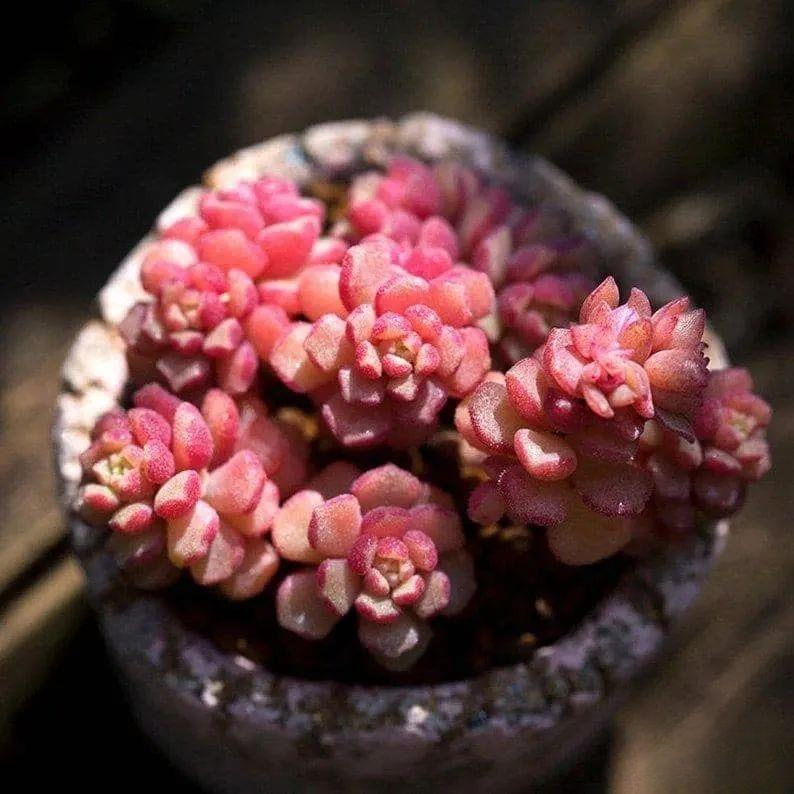
In the eyes of many people, beautiful plants must include succulents. Spring Miracle (Sedum versadense) is also called "Hairy Dieffenbachia". Its leaves are covered with very fine hairs. It is a kind of succulent that grows easily in groups. It grows particularly fast in spring and autumn. Its leaves are small, but they can be propagated by leaf cuttings.
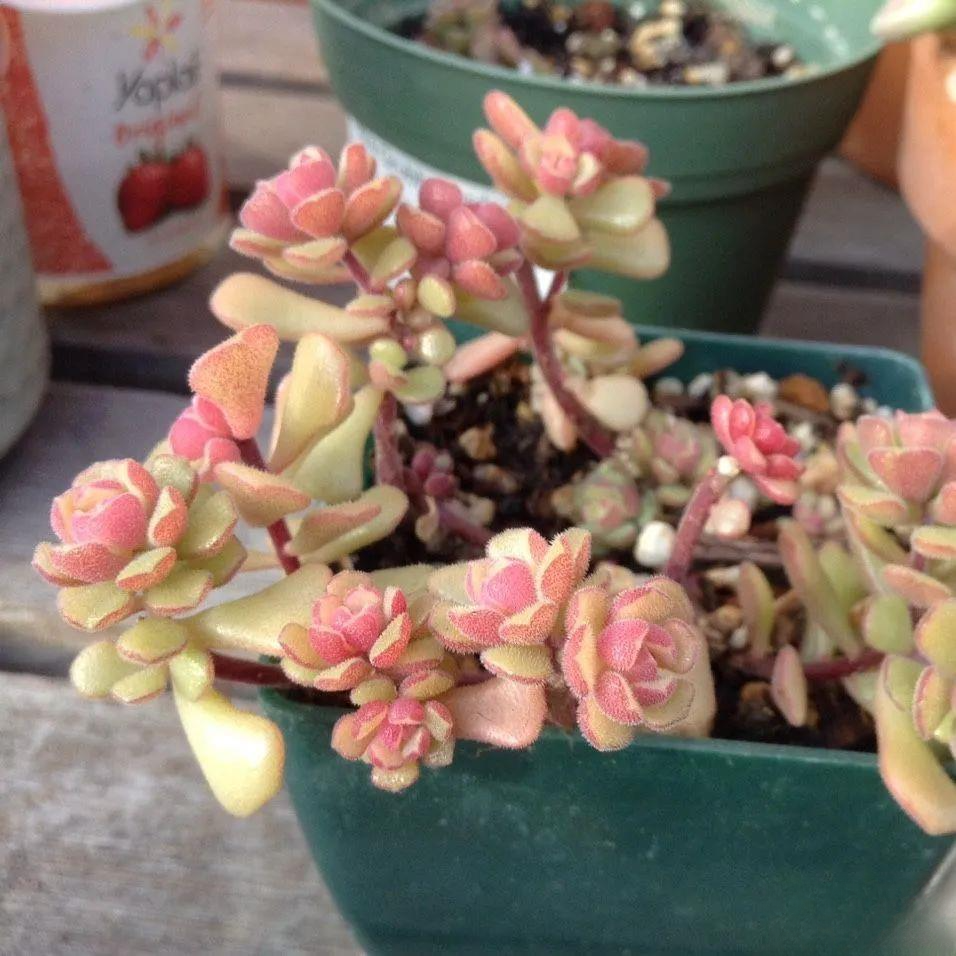
If you want the miracle of spring to grow better, you must have loose, breathable and well-drained soil. You can use half granular soil and half peat soil for planting. The planting pot should preferably be a terracotta pot or other container with good breathability and drainage. The pot should not be too large. In this environment, give it as much direct light as possible in spring, autumn and winter.
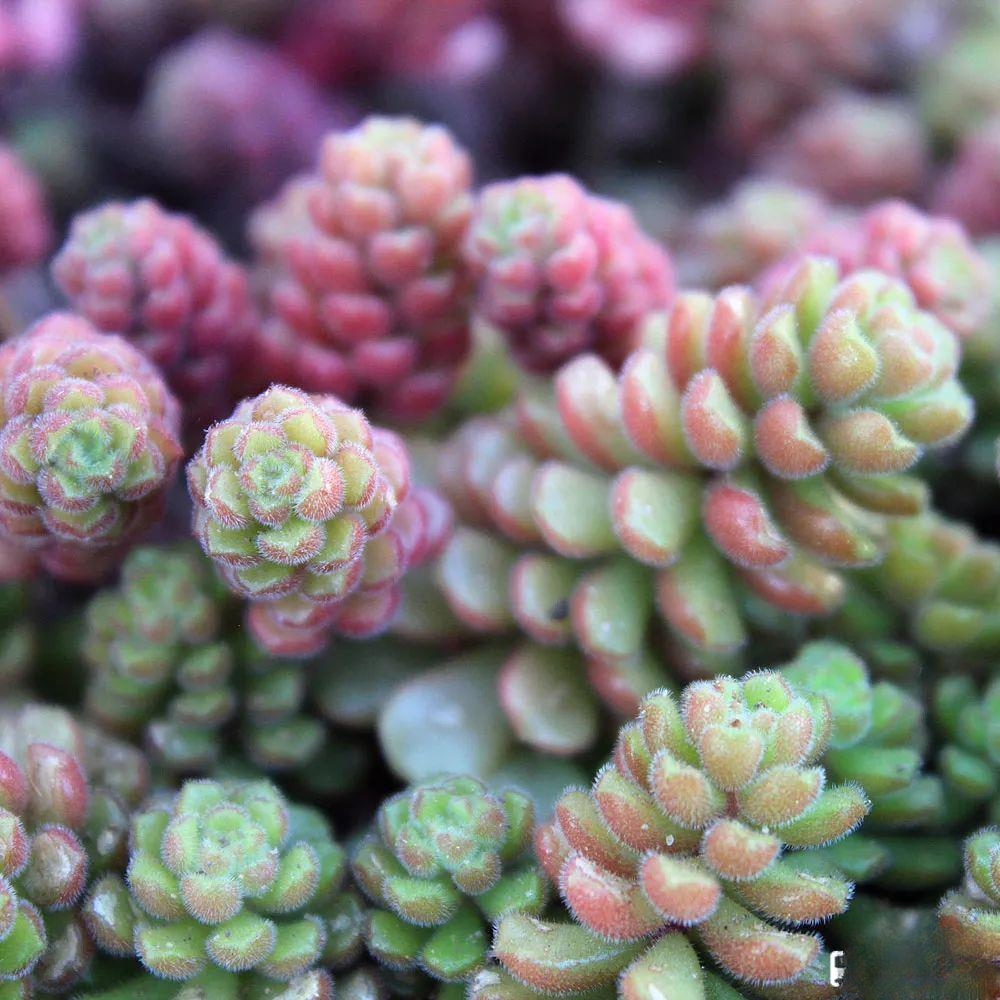
When the temperature exceeds 33 degrees in summer, it is necessary to provide shade for maintenance. In addition, the temperature should be kept above 4 degrees in winter to allow it to overwinter safely. When the temperature difference is large and the light is sufficient, its leaves will look particularly pink and tender, and the leaves will have brocade edges, which is particularly charming.
5. Flower hair star
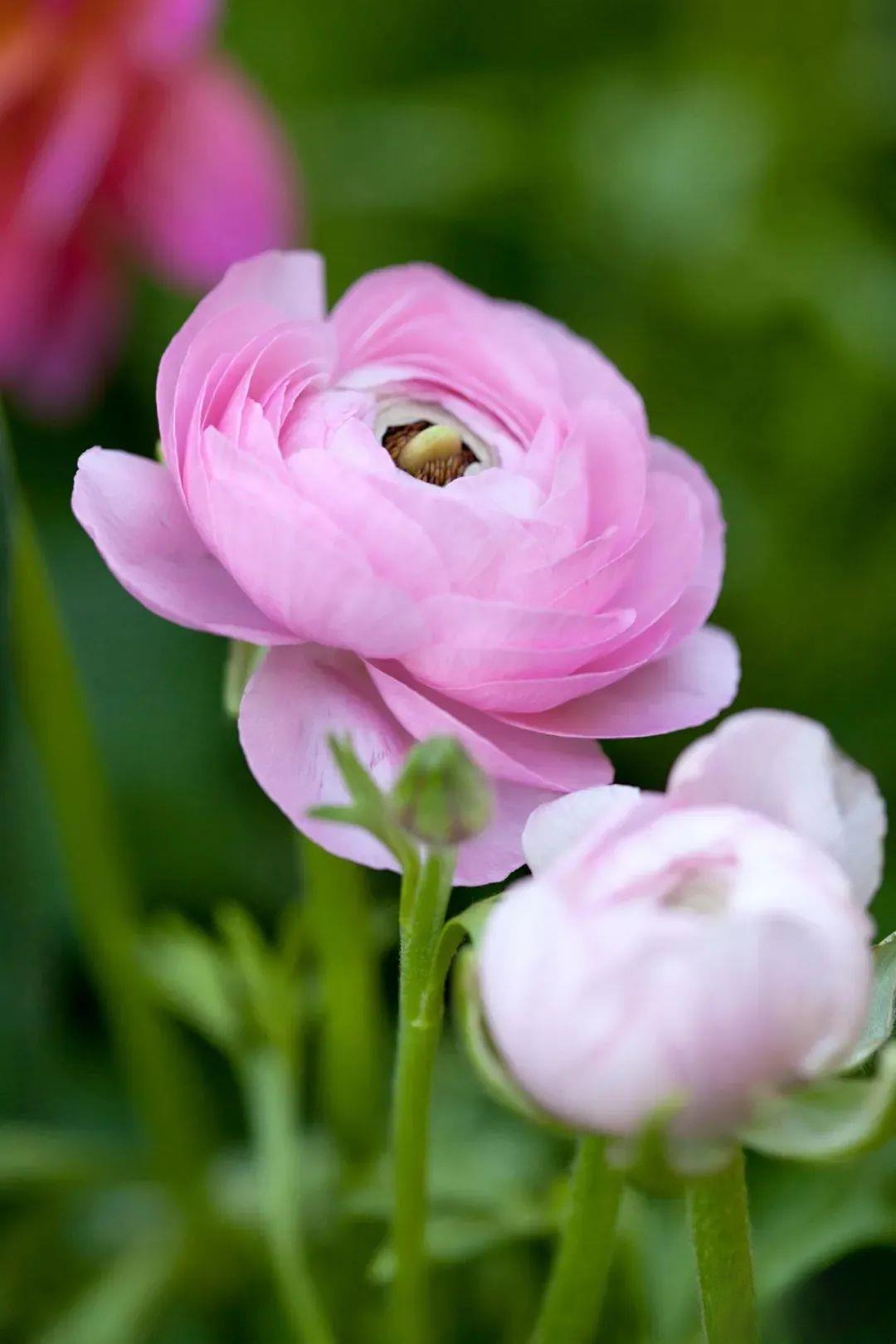
Ranunculus is what we usually call "foreign peony", also called "celery peony" because its leaves look like celery. When the petals are overlapped, like paper flowers, it gives people an unreal sense of beauty.
The flower stems of Anemone are very fragile and will break if bent. Moreover, once the soil in the pot lacks water, the flower stems will droop. It is a relatively delicate bulbous plant.

The flowers of the spathiphyllum are very large and come in a variety of colors, all of which are very attractive, including the common white, pink, yellow, and lavender, as well as some mixed-color varieties. Now horticulturists and enthusiasts have also cultivated spathiphyllums with different flower shapes.
If you want to plant Ranunculus, you can buy potted seedlings directly, or buy some of its tubers for planting. Its tubers are like small claws. After buying them, you can soak them in clean water (mixed with a little carbendazim, 1,000 times), and when its tubers swell slightly, you can plant them. The best time to plant is in autumn.
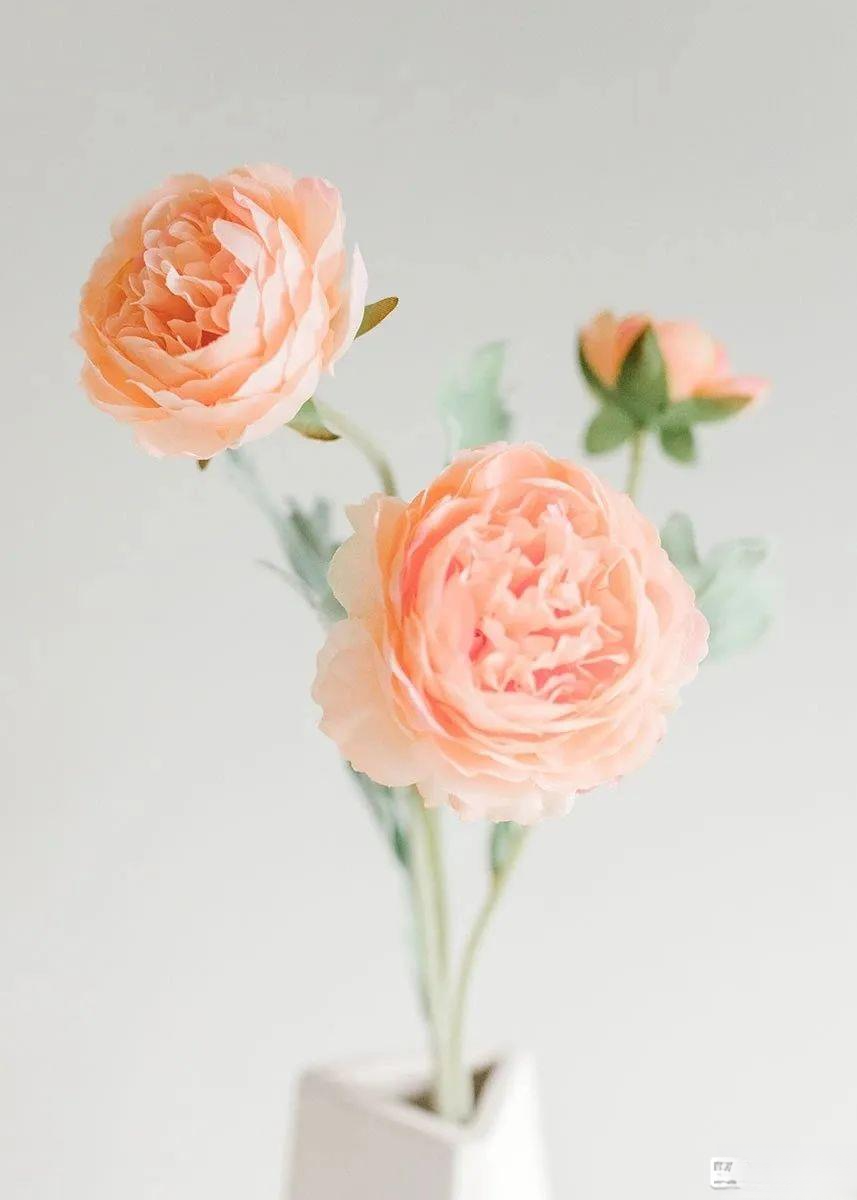
Anemone is also a plant that is very afraid of heat. When the temperature exceeds 28 degrees, the flowers will wither, its leaves will continue to turn yellow, and the leaves will continue to droop, and then they will completely wither. The leaves can be cut off. In order to prevent the roots from rotting, they must be dug up, moved to a dry and cool place for storage, and replanted in autumn.
6. Icelandic Poppy (Icelandic Poppy)
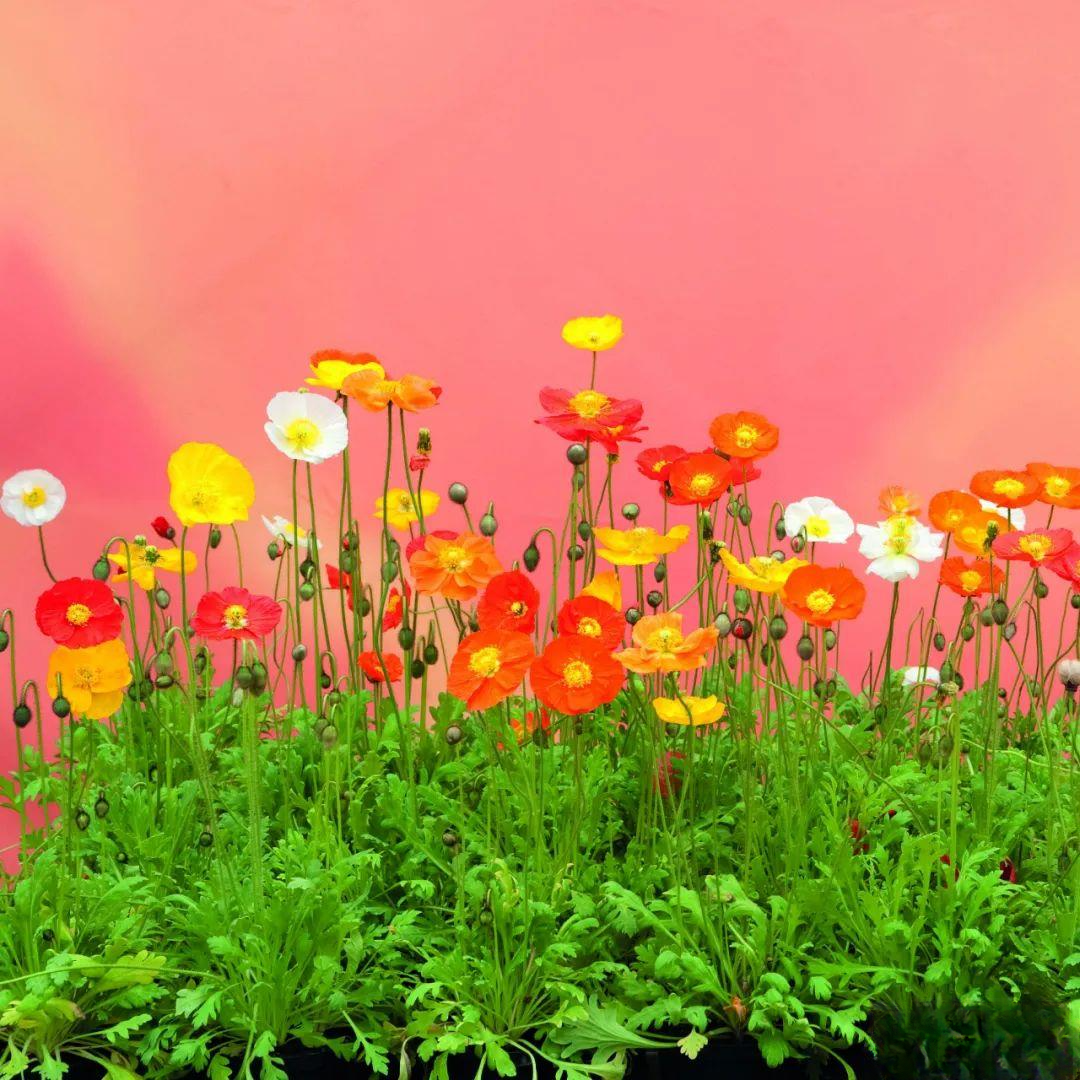
Above is the poppy on the flower bed
Many people have heard of the poppy with blood-red flowers. It is actually the wild poppy (the fruit of the wild poppy "P. nudicaule" is thin and cannot extract addictive substances). It has some beautiful horticultural varieties. The most common horticultural ornamental variety of wild poppy is the Iceland Poppy. The Iceland Poppy has a variety of colors, and its most charming ones are orange, white and light yellow, all of which are orange-yellow colors, beautiful and moving.

Tips: In the market, Icelandic poppies are called "Icelandic poppies", of course, to avoid misunderstanding. Poppies have above-ground stems (leaves grow on the stems), while Icelandic poppies do not have above-ground stems, and the flower stalks are directly pulled out from the bottom.
I want to explain here that opium poppy and wild poppy are two completely different species. There are more than 100 different species of poppy plants, and only opium poppy can be used for bad things. Other plants of the poppy genus cannot be used for bad things. Icelandic poppy is cultivated from wild poppy and other poppy plants.
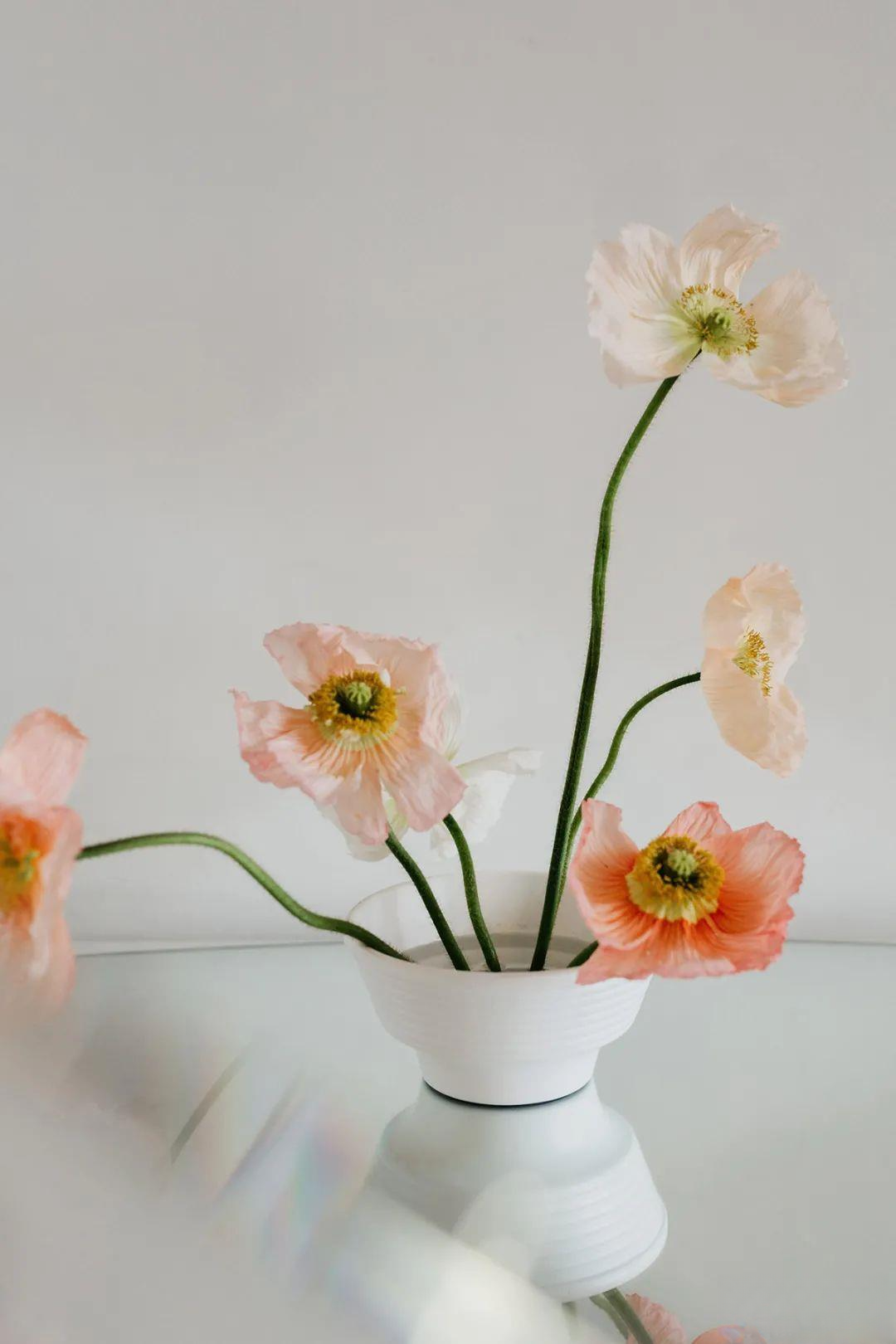
Icelandic poppies are very common in the market. Their flowering period is relatively short. Cut flowers bought from flower shops or flower markets (generally not very cheap) and plump buds placed in a vase (with water) can only stay fresh for a week at room temperature, so the flowers have a short viewing period.
If it is a potted Icelandic poppy, the flowering period is only about three days, and the flowers will wither soon after blooming. Moreover, they like a cool environment, are afraid of high temperature and humidity, and are not resistant to transplanting, so many flower lovers cannot grow them well. You can choose to sow and cultivate them when the weather is cool in autumn.